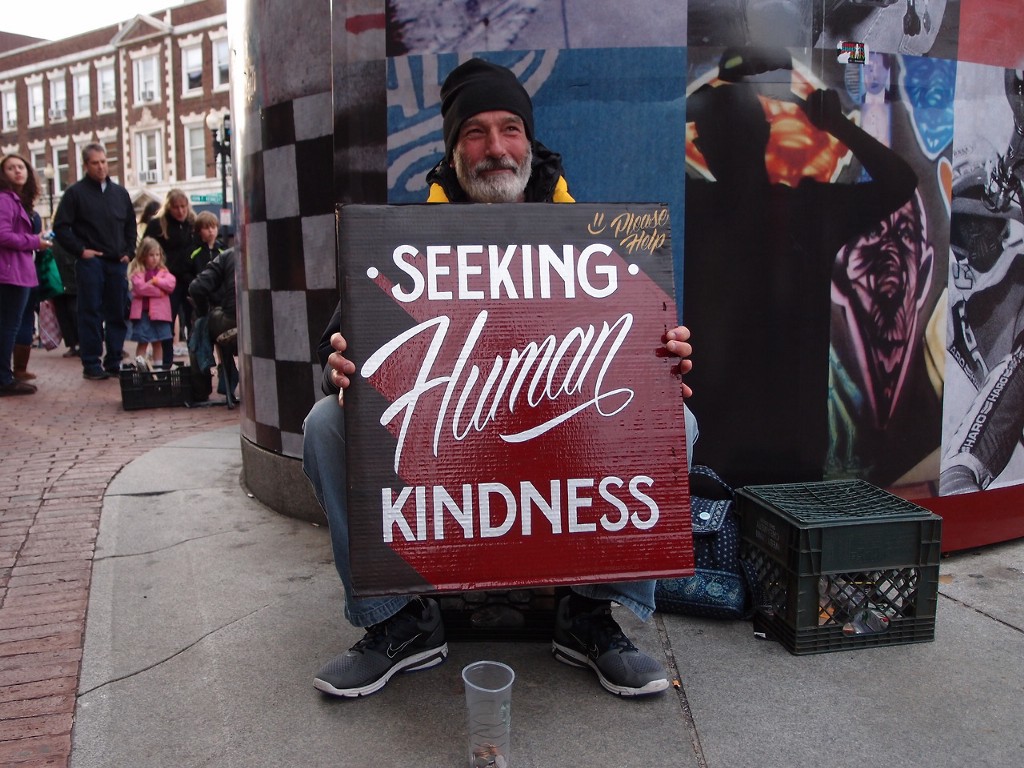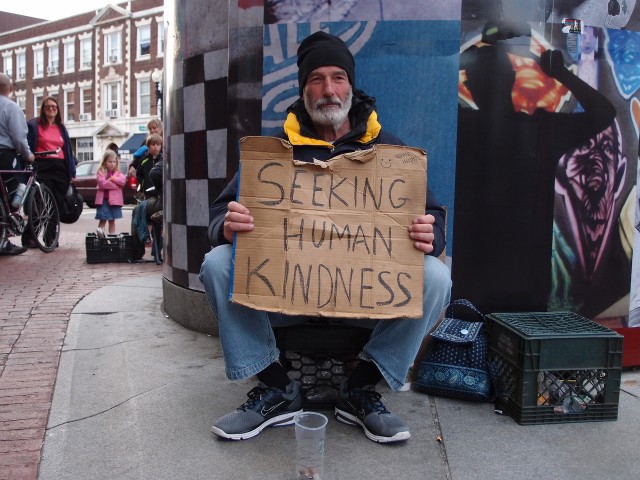A Controversial Graphic Design Project for the Homeless


At the New Yorker, Emily Greenhouse (she of the Emily tag that you’ll see at the bottom of many of my posts) writes about the “Signs for the Homeless” project, a collaboration between artist Kenji Nakayama and Chris Hope that “exchanges quotidian panhandling signs, often Sharpie on cardboard, for pop-art, professional-looking recreations… Homeless participants get interviewed and photographed, and earn twenty dollars in return.”
The project, and its associated headlines — “Can Good Graphic Design Help the Homeless?” at Fast Company, for example — make people uncomfortable in the same way that last year’s SXSW homeless-Austinites-as-wifi-hotspots fiasco did. The persistence of homelessness depends on the invisibility of the homeless (“Growing up [means] becoming acclimated,” writes Greenhouse), and these projects not only make these individuals visible but outfit them with signifiers associated with hipness and privilege; the forcefulness of the resulting juxtaposition is “discomfiting… Doesn’t it mock them to place in their hands the peppy signs with cool fonts and artsy shading?”

At the root of this issue is the fact that homelessness feels both indefensible and insurmountable (“In 2013, the number of homeless people sleeping in New York City shelters each night surpassed fifty thousand for the first time in three decades”) and people don’t know what to do. Greenhouse quotes the Louis CK bit where he chastises an out-of-town visitor for trying to help a homeless man at the Port Authority. “He’s OK?” asks the visitor, and Louie replies: “No, no, he needs you desperately. We just don’t do that here… Silly country girl!”
Greenhouse concludes that “any measure inventive enough to get us to confront those suffering from homelessness is doing some good.” What do you guys think? I am glad for the interviews on the “Signs for the Homeless” website; here’s what the man in these pictures (Mike, 57, calls himself the “Pope of Harvard Square”) had to say.
How did you become homeless?
I always did relatively well in life. I was a construction work supervisor. In 2008 I had a mild stroke, and months later was laid off during the economic crash. I have a lot of medical bills, and because I haven’t fully recovered from my stroke, I can’t go back into the construction business again. My health is about 65% back to where it was, and I’m grateful for that. But my poor health hinders me from going back into my trade.
How do you get through the cold winters?
It is very tough. Very tough. The problem is when you wake up with 6 inches of snow on you. There is never enough space in the shelters, and you don’t know where your next meal is going to come from. Fortunately, some businesses in Cambridge allow you to sleep in the door ways of some of the stores for shelter.
What is your biggest struggle being homeless?
Maintaining interpersonal relationships. Everybody in the streets are always coming and going. You have friends that are here today but are gone tomorrow. I want to thank you guys for your donation of twenty dollars. It will really help me get through this week.